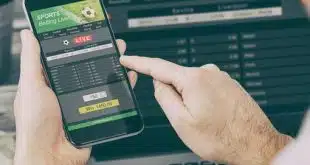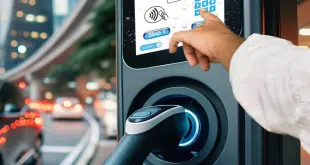Having been for years at the center of speculation on the matter, Apple Inc. may finally be readying a foray into mobile payments, according to news reports over the weekend.
Citing knowledgeable sources, The Wall Street Journal Friday night said online-services chief Eddy Cue is heading up the effort at the Cupertino, Calif.-based computer giant and is meeting with payments-industry insiders. Business-news service Bloomberg, also relying on a person with “knowledge of the matter,” the next day reported that Cue has appointed Apple executive Jennifer Bailey as a top lieutenant in the venture.
Neither news outlet reported when the new service might become commercially available. Apple spokespeople did not respond to Digital Transactions News inquiries about the matter Monday morning.
However, Apple chief executive Tim Cook called mobile payments “a big opportunity on the platform” during a conference call Monday afternoon to discuss the company’s fiscal first-quarter earnings. “The mobile-payments area in general is one we’ve been intrigued with,” Cook told analysts on the call. Even so, he added that “we have nothing specific to announce today.”
Rumors about a move into mobile payments have swirled around the notoriously tightlipped company for years, but this latest development is the first that appears to have credible sources behind it. Apple is widely seen as possessing a number of technology assets that would prove valuable in a mobile-payments venture. It also up to now has largely ceded the field to Silicon Valley rivals like Google Inc., which introduced its Google Wallet in 2011.
Apple in 2012 introduced a mobile wallet called Passbook, but its utility has been limited to storing documents like coupons and boarding passes. Its payments function is limited to proprietary store cards.
Now, though, Apple could introduce a powerful mobile-payments product based on existing in-house technologies that could streamline authentication, service discovery, and checkout, all key functions that many mobile ventures have stumbled over, experts say. Looking to these capabilities, a rough outline emerges of what an Apple mobile-payments venture might look like.
While it remains unclear whether the expected new service will focus on online or physical stores, Apple would be well-advised to start with online payments for physical goods, says Rick Oglesby, a senior analyst at Boston-based consultancy Aite Group LLC who follows mobile payments. Later, the company could introduce in-store payments at its 420 Apple stores and then roll it out to other merchants as they became ready for it, he adds.
A key technology in that effort, he says, would be iCloud Keychain, a service that calls up stored information like passwords, payment credentials, and shipping addresses and auto-fills Web-site forms. Keychain is embedded in Apple’s operating system and in Safari, its Web browser. Apple could combine this capability with its massive database of iTunes users, said to be more than 400 million strong. “By leveraging the iTunes customer-registration database and exposing Keychain as an [application programming interface], [Apple] will be able to support in-app payments, all sort of customer sign-ups, etc.,” says Oglesby in an email message.
Revenue on in-app payments could be crucial to Apple, according to Dan Schatt, a former PayPal executive who is now working on a book on electronic payments and mobile commerce. Some 90% of app-related revenue is now derived from in-app payments, yet Apple is not making any money off those transactions beyond the initial download, Schatt says. “It makes perfect sense for them to want to change that,” he adds, through a mobile-payments capability.
Another Apple technology that could be advantageous for mobile payments is Touch ID, the fingerprint sensor built into the iPhone 5s introduced last fall. This biometric approach would simplify and speed up user authentication, Oglesby says. Indeed, mobile payments were “one of the thoughts behind Touch ID,” said Cook during the earnings call Monday.
This arsenal of technologies together “could be used immediately to complete quick and easy online purchases,” Oglesby adds.
Finally, for a move into physical stores, Apple could rely on iBeacon, a Bluetooth low-energy technology that detects mobile devices in proximity and links them to store point-of-sale systems for quick checkouts.
”The physical merchant ecosystem isn’t quite ready for this sort of service, so I think it’s a bit further down the road, but the promulgation of mobile POS systems or potential partnerships with major [financial institutions], payment networks, MCX, or large merchants could be accelerants to make this happen sooner,” Oglesby notes. MCX is Merchant Customer Exchange, a Dallas-based mobile-payments venture controlled by big-box retailers, including Wal-Mart Stores Inc., Best Buy Co Inc., and CVS/pharmacy.
In addition to existing technologies, Apple has applied for and received a number of patents over the past several years that are or could be related to mobile payments, including patents related to near-field communication (NFC), which creates a two-way link between mobile devices and POS devices. This intellectual property has fueled speculation over Apple’s intentions in mobile payments.
As for mobile devices, Apple disclosed Monday it sold 51 million iPhones and 26 million iPads in its October through December quarter, up from 47.8 million and 22.9 million, respectively, in the year-earlier quarter.





